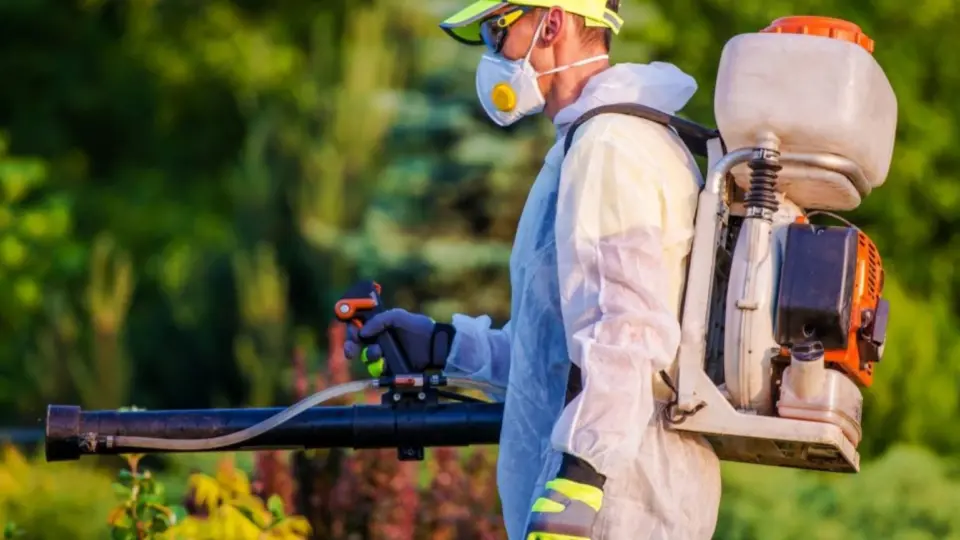
Finding pests repeatedly invading your property can be incredibly frustrating. It’s not just about the nuisance—they can cause damage, spread diseases, and disrupt your peace of mind. But why do they keep coming back? The answer lies in understanding pest behavior and what attracts them to your home or business in the first place.
Factors like readily available food sources, shelter, and suitable breeding conditions make your property an ideal habitat for these unwelcome guests. Understanding these factors is key to breaking the cycle of infestation.
What factors make a property attractive to pests?
Several factors make a property attractive to pests, providing them with the essentials to survive and thrive. Here are some of the most common attractants:
- Food Sources: Accessible food is one of the top reasons pests invade properties. Unsealed food containers, left-out pet food, and crumbs or spills attract ants, rodents, and cockroaches. Even outdoor trash cans and compost piles can lure pests if improperly sealed.
- Water Availability: Pests are drawn to moisture, making properties with standing water, leaky pipes, or clogged gutters ideal habitats. Water sources attract pests like mosquitoes, which breed in stagnant water, and rodents, which seek hydration.
- Shelter and Nesting Areas: Cluttered areas, such as basements, attics, garages, and storage rooms, offer safe hiding spots for pests. Overgrown vegetation or wood piles near the home also provide shelter, attracting insects, rodents, and other unwanted guests.
- Entry Points: Cracks in walls, gaps in doors and windows, and damaged screens make it easy for pests to enter. Small entry points allow pests to infiltrate and find shelter within the property.
- Warmth and Protection from Elements: Pests seek warmth and protection indoors in colder months. Properties that offer temperature stability and insulation become prime locations for pests trying to escape extreme weather.
Addressing these factors can help reduce the likelihood of recurring pest issues on your property.
How does pest behavior contribute to repeated infestations?
Pest behavior plays a significant role in causing repeated infestations, as many pests are driven by instincts and habits that encourage them to return to favorable environments. Here’s how their behavior contributes to ongoing issues:
- Habitual Nesting: Pests like rodents and ants are creatures of habit, often returning to places where they previously found food, water, or shelter. Once they establish a nest or colony, they will likely return, especially if their nesting sites remain undisturbed.
- Marking Territory: Some pests, such as rodents, mark their paths with scent trails or pheromones, guiding other species to the same location. This behavior leads to repeated infestations as more pests follow these markers.
- Breeding Patterns: Many pests reproduce quickly, allowing infestations to grow rapidly. If breeding grounds, like standing water for mosquitoes or dark, secluded areas for cockroaches, are left unaddressed, populations will continue to increase.
- Seasonal Migration: Pests often enter properties in response to seasonal changes, like colder weather driving rodents indoors. These patterns result in recurring infestations during specific times of the year.
- Foraging Instincts: Pests are constantly seeking new food sources. If food and water are easily accessible, pests will forage and return regularly, viewing the property as a reliable resource.
Understanding these behaviors helps implement targeted prevention measures, reducing the chances of repeated infestations.
Why do some pest control methods fail to prevent returns?
Some pest control methods fail to prevent pests from returning due to various factors affecting their effectiveness and long-term success. Here’s why some methods don’t provide lasting results:
- Superficial Treatments: Many over-the-counter solutions address only visible pests rather than targeting nests, eggs, or colonies. Without addressing the root of the infestation, pests are likely to return once the treatment wears off.
- Ineffective Targeting: General pest control methods may need to be more specific to tackle certain species. Each pest has unique behaviors and preferences, so using a one-size-fits-all approach can result in ineffective control, leaving some pests unaffected.
- Lack of Environmental Modifications: Successful pest control requires eliminating food, water, and shelter sources. If these environmental attractants remain, pests will return, regardless of treatments applied.
- Failure to Seal Entry Points: Pests often return because entry points, like cracks and gaps, are left unaddressed. Without blocking access, pests can easily re-enter the property after treatment.
- Incomplete Treatment Cycles: Some pests, like bedbugs or fleas, require multiple treatments to eradicate. Inconsistent or incomplete treatment cycles allow these pests to survive and repopulate quickly.
- Resistance to Chemicals: Some pests resist common pesticides over time, making standard treatments less effective. If alternative or more targeted solutions are not used, this can lead to repeated infestations.
Effective pest control requires a comprehensive approach, targeting the pests and the environmental factors that attract them.
How can understanding pest habits help with long-term control?
Understanding pest habits is essential for long-term control, as it allows for targeted, strategic approaches that disrupt their natural behavior and prevent re-infestations. Here’s how knowledge of pest habits contributes to lasting solutions:
- Identifying Peak Activity Times: Knowing when pests are most active, such as rodents’ nocturnal behavior, allows for treatments and preventive measures to be timed effectively. Targeting pests during active hours increases the impact of control methods.
- Pinpointing Nesting and Breeding Areas: Recognizing where pests typically nest or breed, such as termites in wood structures or mosquitoes in standing water, enables precise intervention. Treating these areas disrupts the life cycle and prevents populations from regenerating.
- Blocking Entry Points Based on Behavior: Understanding common entry methods, like ants using scent trails or rodents entering through gaps, helps seal specific access points. By eliminating easy access, you reduce the likelihood of pests returning.
- Reducing Attractants: Knowledge of what attracts pests, such as food crumbs for ants or moisture for cockroaches, allows for removing or reducing these resources. This makes the property less appealing to pests over time.
- Selecting Effective Treatment Strategies: Certain pests may resist specific treatments, so knowing their habits helps them choose the right control methods. This targeted approach maximizes effectiveness and reduces the need for repeated treatments.
By understanding pest behavior, property owners can implement preventive measures that address the root causes, creating an environment that is less hospitable to pests and achieving long-term control.
Stop Pests for Good: Understand Their Persistent Behavior!
At Freedom Pest Services, understanding pest behavior is the key to stopping infestations for good. Our expert team goes beyond simple treatments, analyzing each pest’s specific habits and needs to create targeted solutions that prevent them from returning.
By identifying attractants, blocking entry points, and addressing nesting areas, we ensure long-term pest control that truly works. Trust Freedom Pest Services protects your property with comprehensive, behavior-focused methods that keep pests out and give you peace of mind. Stop pests for good with us today!
